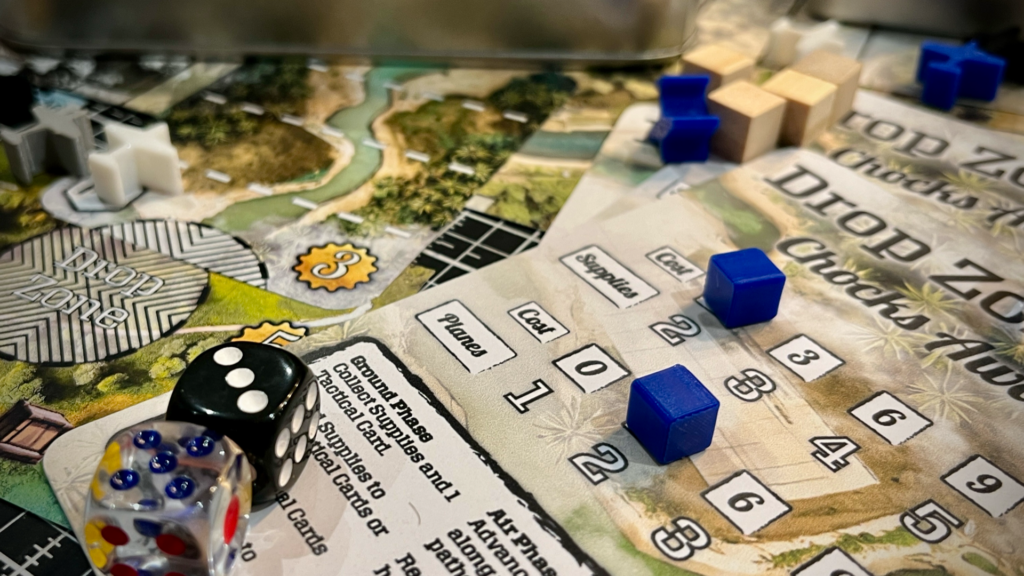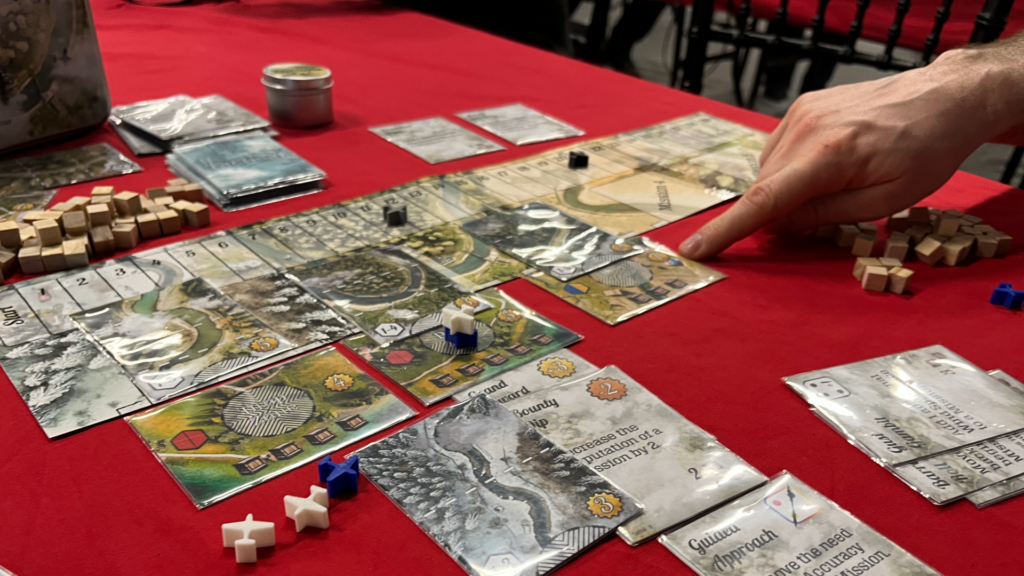
Eight months into the development of Drop Zone, a crucial phase emerged in the game’s creation: defining the endgame. This stage, far from a mere formality, is a testament to the game’s strategic depth and its ability to offer a gripping and balanced conclusion for all players. Achieving a satisfying endgame is a challenge that demands careful consideration, one that I’m passionately embracing, for if you take nothing else from a game, you remember how you felt in those final moments.
An endgame is pivotal; it’s where players’ strategies and decisions converge in an exciting resolution. I want to build a game that maintains competitive tension and strategic viability for each player until the game’s final moments. This principle guided us in crafting an endgame that empowers players, providing them with meaningful autonomy and a tangible shot at victory, right up until the last turn.
At the heart of the game lies a unique blend of mechanisms designed to enrich the player experience throughout different phases (early, mid and late). These include resource management, strategic planning, and adaptability, which are crucial for navigating the early, mid, and late game scenarios. Specifically, the introduction of extra missions in later stages introduces fresh challenges and opportunities, demanding players to recalibrate their strategies and tactics.
One central question guided our design process: How do you end a game in a manner that is clear, engaging, and maintains strategic depth? Various approaches can signal a game’s conclusion, such as reaching a certain score, fulfilling specific win conditions, or hitting a predetermined time or round limit. However, regardless of the method, transparency and universal understanding of the endgame criteria among players are key to a successful and enjoyable game.

In Drop Zone, we integrated a mechanism that unfolds through specific ‘Flight Missions.’ Players initially tackle three distinct missions, each evolving upon completion and culminating in the introduction of a more complex fourth and, ultimately, a definitive fifth mission. When the final mission is complete, the game ends and the Reputation of each player indicates who wins. This progression provides a clear structure and endpoint, and also elevates the endgame into a strategic crescendo where every decision counts.
Balancing the final mission was an intriguing puzzle. The timing of when to pursue or delay this mission became a game within the game, adding layers of strategic depth and interpersonal dynamics. Our playtests revealed a tapestry of strategies, with players jockeying for position, gauging the optimal moment to strike, or choosing to bide their time, building strength in other areas.
This nuanced endgame fosters a climactic showdown brimming with anticipation and tactical intrigue. Players must navigate their unique paths to victory, weighing their moves against the evolving strategies of their opponents. The visibility of scores and progress throughout the game heightens the competitive edge, ensuring that every player remains deeply invested until the very end.
Crafting an endgame that resonates with players long after the game has concluded is critical. The finale of a game should leave all players, regardless of their final standing, feeling that their experience was empowering, enjoyable, and, above all, fair. A well-designed endgame not only provides clarity and resolution but also reinforces the camaraderie and shared adventure that board gaming embodies.
The finale of a game should leave all players, regardless of their final standing, feeling that their experience was empowering, enjoyable, and, above all, fair.
As Drop Zone approaches its final form, we’re reminded of the importance of endings in both games and narratives. A memorable endgame is one where strategies, skills, and suspense converge in a fulfilling conclusion. It’s about ensuring that every player walks away from the table eager for the next adventure, regardless of the outcome. This is the mark of a truly successful board game.


